One month on: ‘It won’t happen again, right?’
Survivors of APS attack confront their fears as they head back to school.
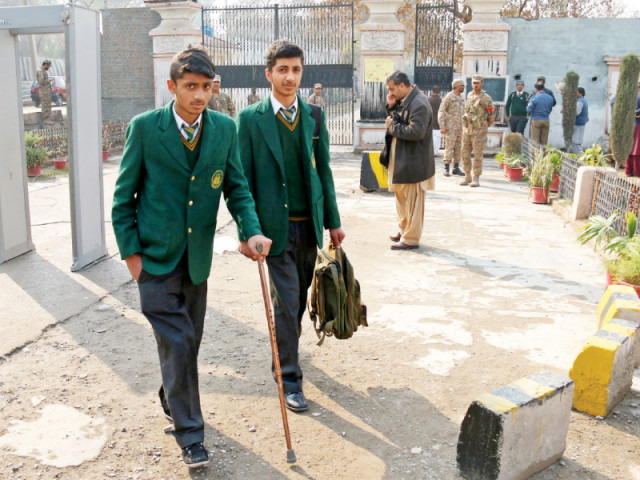
Injured APS student leaves after day in class. PHOTO: MUHAMMAD IQBAL
These might be ordinary winter mornings with ordinary school traffic clogging the streets — till one turns from a bustling Warsak Road into the quiet street which leads to Army Public School. At the top of a triangle, APS is right under the nose of a cantonment graveyard and army buildings.
A month ago, 150 people — mostly children — were ruthlessly sought out and shot dead in APS. As the school welcomes back its survivors, the entire landscape has changed.
After every third or fourth vehicle carrying children dressed in the now iconic green jackets, an army patrol vehicle can be seen with a soldier standing on top, his weapon aiming at nothing in particular. At a short distance from the main gate, drivers are stopped by a brusque army officer — no vehicles beyond this point. Children and their accompanying adults slowly walk the few metres which marked the difference between life and death on December 16 for those who went inside and those who stayed home.
Day one at APS saw the reassuring army chief greeting children at the gate; day two and beyond, the students are met by four men in khakis. Parents and guardians are allowed to see children off till the main gates, the walls next to which have been raised taller. The goodbyes are hushed and the walk back to the car for the parents borders on bravado, betrayed by a last look at the closed gates.
Once inside, the children are obviously happy to see each other but not all are as confident about being in the same space again. “In the car, my nephew asked me, ‘It won’t happen again, right?’” says one man as he dropped a child at the school. “I told him, ‘So what if it happens again?’” This is the answer for times when children are told to stand up to such terror. “I cannot hide them from death; the time of death is predetermined,” other parents say.
Some even say they would give up their child to fight this war begotten by adults.
Turning grief
Waliur Rehman has two sons in grade eight and grade nine at APS. The students of grade eight, nine and 10 were the ones inside the auditorium where children had hidden under bodies of their classmates or had played dead to avoid a bullet to the head on December 16. Even so, Rehman insists his sons are not scared to return to school. “Their mother wanted to take the kids out of the school but, I said we will keep them here and that was that,” he added.
When asked if there should be someone to blame, Rehman, a serviceman himself, says, “If you think about who to blame — we knew the operation in the agencies would have consequences, but the slaughter of children…”
Rehman did have a perfect opportunity to put the question of blame to the man leading the armed forces a day prior; “Some people did ask Raheel Sharif, who do we blame, who do we take to task?” he says. However, Rehman would not discuss this further, smack in front of the school manned by men of his service.
Another student’s relative — a government employee — spoke in more detail about the chief of army staff’s visit to APS. “Raheel met each child and told them, “Ghabrao nahi’.” Even the parents of children who died were there, happy to meet the army chief, he adds.
Some parents had been invited to APS on the first day after it buried over 130 of its own. While others preferred to grieve in private, there were those who did not want to see their child’s involuntary sacrifice go in vain. “I want my second son [also an APS student] to join the army and take revenge,” said one mother who lost a son.
The city’s soft underbelly
Individually securing all soft targets like hospitals is logistically impossible. Even the terror-struck APS looked as vulnerable as the next building, despite increased fortification. Four army men keep a vigilant eye at the school’s gate while the school wall follows the road going towards Bihar Colony for approximately 300 metres. The recently patched up wall is topped by shiny rolls of barbed wire. Only one CCTV camera could be seen pointing at the start of the residential area. All lights remained pointed inwards, at the school.
There is a second entrance to APS, barricaded and manned by one soldier with his attention diverted to the cars immediately in front of him. Across the road, there are many small temporary settlements, a sprawling graveyard and next to no infrastructure such as street lights. Warsak Model School also lies in the vicinity, with one entrance on the same unlit road going towards the colony.
Where the APS wall ends, Bihar Colony explodes with its congested construction, shops and foot traffic. Shopkeepers here told The Express Tribune both army officials and the police had asked people here to fill out forms, with the names of residents, copies of their CNICs and details of cars owned and cars which visit them. However, this information does not appear to be considered a high priority as the colony’s residents had left the forms with the shopkeepers, for the police to come and collect.
Published in The Express Tribune, January 16th, 2015.

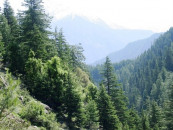
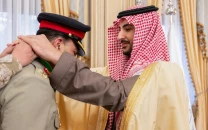
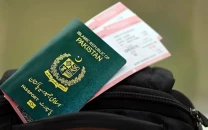

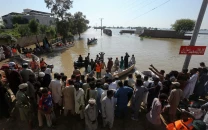
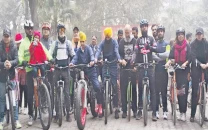

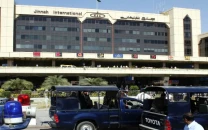
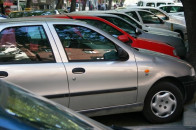

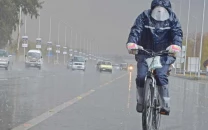
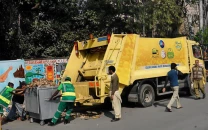






COMMENTS
Comments are moderated and generally will be posted if they are on-topic and not abusive.
For more information, please see our Comments FAQ